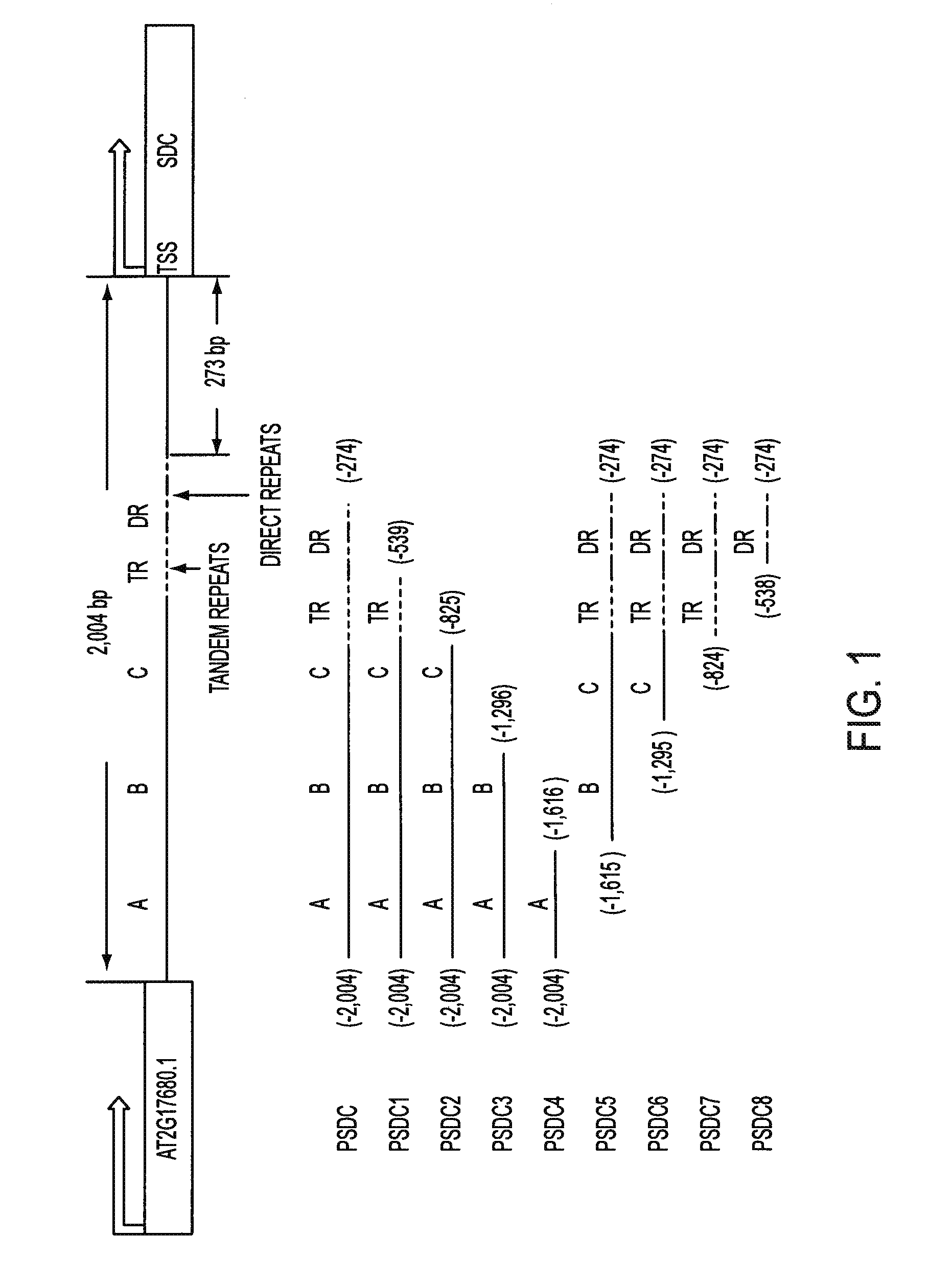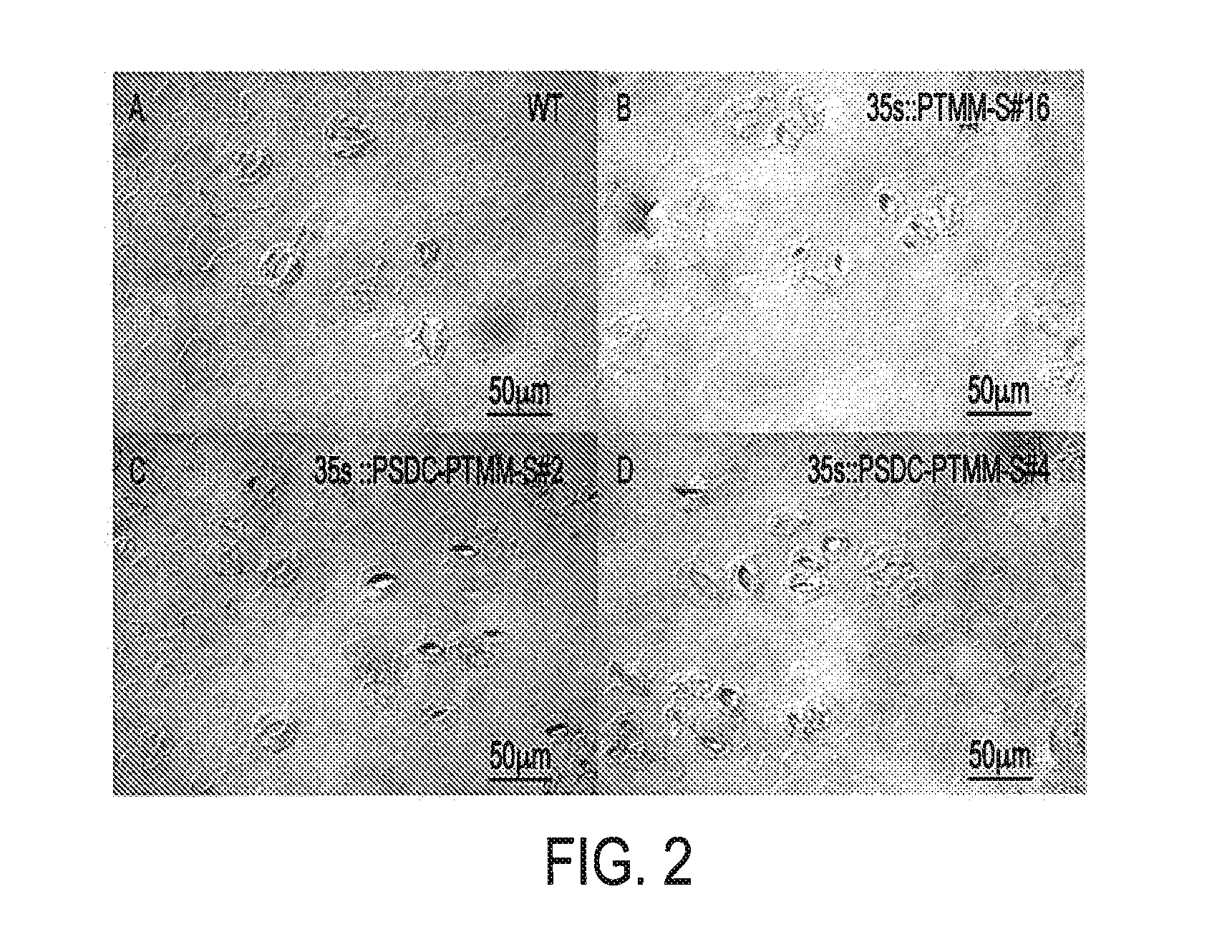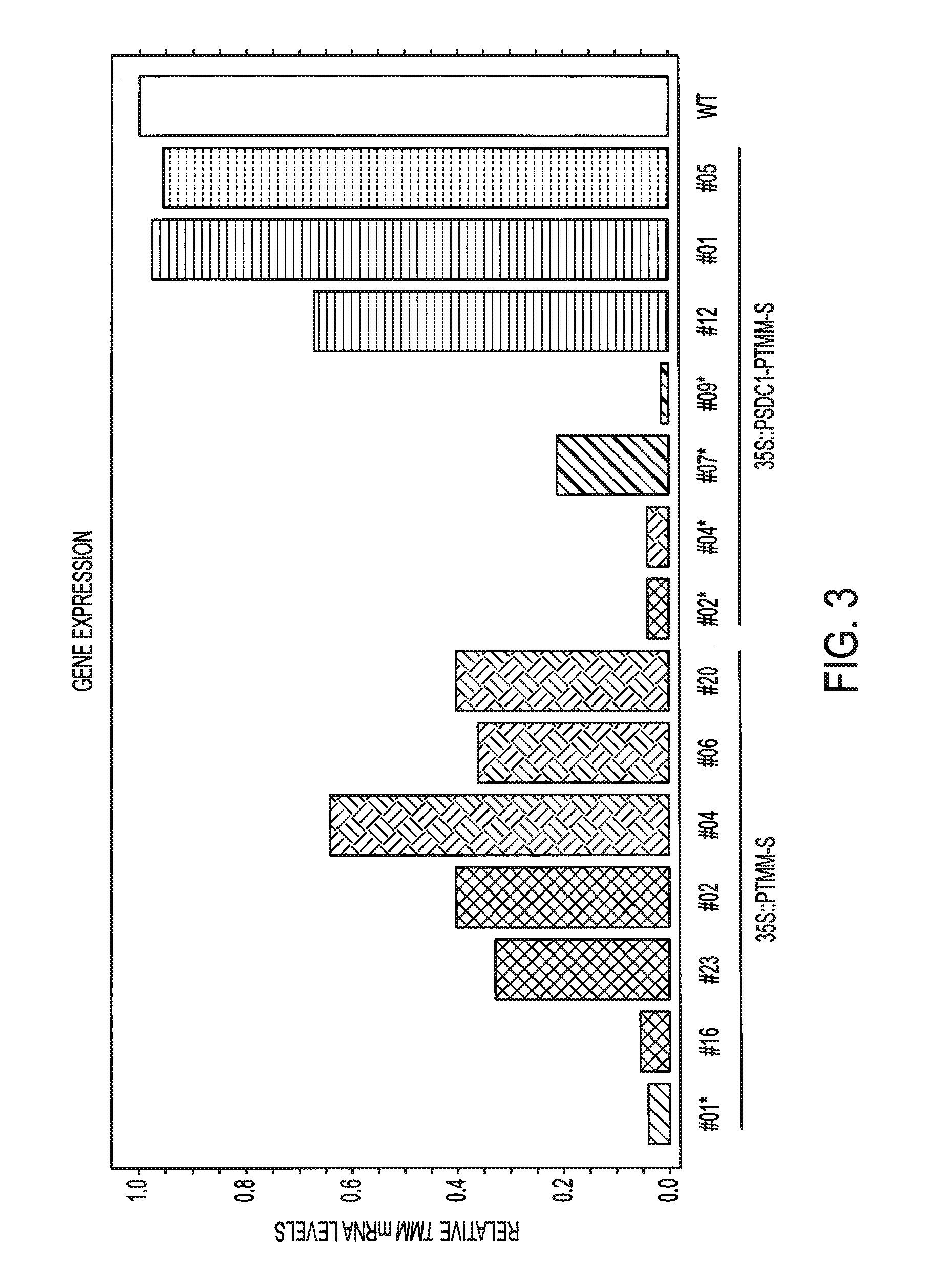Gene silencing
- Summary
- Abstract
- Description
- Claims
- Application Information
AI Technical Summary
Benefits of technology
Problems solved by technology
Method used
Image
Examples
example 1
Vector Construction
[0083]Using standard PCR and cloning techniques, a 1,731-bp Arabidopsis thaniana wild type (WT) genomic DNA fragment from the promoter region (position −274 to −2,004; transcription start site is +1) of AT2G17690 (SDC) was cloned into a Gateway entry vector to generate pENTR / PSDC. A 475-bp genomic DNA fragment from the promoter region (-9 to −483; transcription start site is +1) of AT1G80080 (TMM) was cloned into a Gateway entry vector to give pENTR / PTMM-S. The primers used to clone these two genome DNA fragments contained the restriction enzyme sites, AvrII in the forward primer and SpeI, AscI, in the reverse primer. pENTR / PSDC was double digested by SpeI and AscI to linearized pENTR / PSDC. pENTR / PTMM-S was digested by AvrII and AscI to release PTMM-S DNA fragment. Because of the compatible digested ends of AvrII and SpeI, the digested PTMM-S DNA fragment could be ligated into the linear pENTR / PSDC to generate pENTR / PSDC-PTMM-S. pENTR / PTMM-S and pENTR / PSDC-PTMM-S ...
example 2
Plant Materials and Transformation
[0084]Arabidopsis thaliana WT (Col-0) and tobacco Nicotiana benthamiana were used in this research. Stable transformation of Arabidopsis was performed by floral dip method as described by Zhang et al. (2006). Transformed plants were screened on selection medium (1×MS salts+1% Sucrose+0.5 g / L MES+100 mg / L Carbenicilin+10 mg / L basta+8% Agar pH 5.7). Two-week old T1 and T2 seedlings were used to score for clustered stomata phenotype under a microscope. T3 homozygous seedlings were used for DNA methylation and chromatin modification assays. Tobacco N. benthamiana leaf Agro-infiltration (Voinnet et al., 2003) was used to assay small RNAs levels produced by different constructs.
example 3
Stomata Phenotype Observation
[0085]Cotyledons of two-weed old T1 and T2 seedlings were used to score for stomata phenotype under a microscope. In wild type (WT), stomata appear on the lower surface of cotyledons and they are separated by at least one intervening epidermal cell. If two or more than two stomata are located together, the seedling will be scored as displaying a tmm mutant phenotype (clustered stomata phenotype). For each transformation event of a construct, 32-64 T1 independent lines and 24 T2 independent lines were scored to determine the penetration rate of the tmm phenotype.
PUM
| Property | Measurement | Unit |
|---|---|---|
| Gene expression profile | aaaaa | aaaaa |
Abstract
Description
Claims
Application Information
 Login to View More
Login to View More - R&D
- Intellectual Property
- Life Sciences
- Materials
- Tech Scout
- Unparalleled Data Quality
- Higher Quality Content
- 60% Fewer Hallucinations
Browse by: Latest US Patents, China's latest patents, Technical Efficacy Thesaurus, Application Domain, Technology Topic, Popular Technical Reports.
© 2025 PatSnap. All rights reserved.Legal|Privacy policy|Modern Slavery Act Transparency Statement|Sitemap|About US| Contact US: help@patsnap.com



